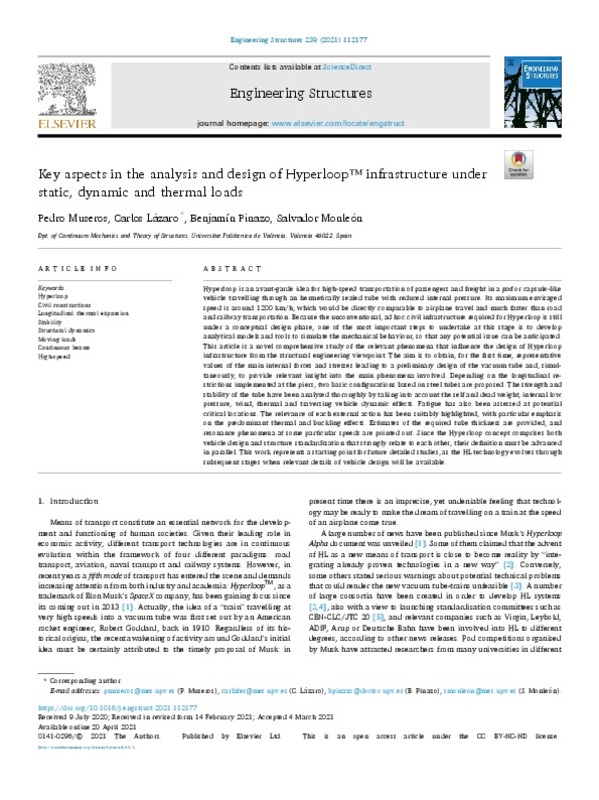JavaScript is disabled for your browser. Some features of this site may not work without it.
Buscar en RiuNet
Listar
Mi cuenta
Estadísticas
Ayuda RiuNet
Admin. UPV
Key aspects in the analysis and design of Hyperloop(TM) infrastructure under static, dynamic and thermal loads
Mostrar el registro completo del ítem
Museros Romero, P.; Lazaro, C.; Pinazo, B.; Monleón Cremades, S. (2021). Key aspects in the analysis and design of Hyperloop(TM) infrastructure under static, dynamic and thermal loads. Engineering Structures. 239:1-20. https://doi.org/10.1016/j.engstruct.2021.112177
Por favor, use este identificador para citar o enlazar este ítem: http://hdl.handle.net/10251/181736
Ficheros en el ítem
Metadatos del ítem
| Título: | Key aspects in the analysis and design of Hyperloop(TM) infrastructure under static, dynamic and thermal loads | |
| Autor: | ||
| Entidad UPV: |
|
|
| Fecha difusión: |
|
|
| Resumen: |
[EN] Hyperloop is an avant-garde idea for high-speed transportation of passengers and freight in a \emph{pod} or capsule-like vehicle travelling through an hermetically sealed tube with reduced internal pressure. Its maximum ...[+]
|
|
| Palabras clave: |
|
|
| Derechos de uso: | Reconocimiento - No comercial - Sin obra derivada (by-nc-nd) | |
| Fuente: |
|
|
| DOI: |
|
|
| Editorial: |
|
|
| Versión del editor: | https://doi.org/10.1016/j.engstruct.2021.112177 | |
| Código del Proyecto: |
|
|
| Agradecimientos: |
The authors gratefully acknowledge the financial support of the Generalitat Valenciana, through grant AICO/2019/025 for the project "Analisis Dinamico aplicado al Diseno de Viaductos para Hyperloop: Vibraciones de Flexion, ...[+]
|
|
| Tipo: |
|









